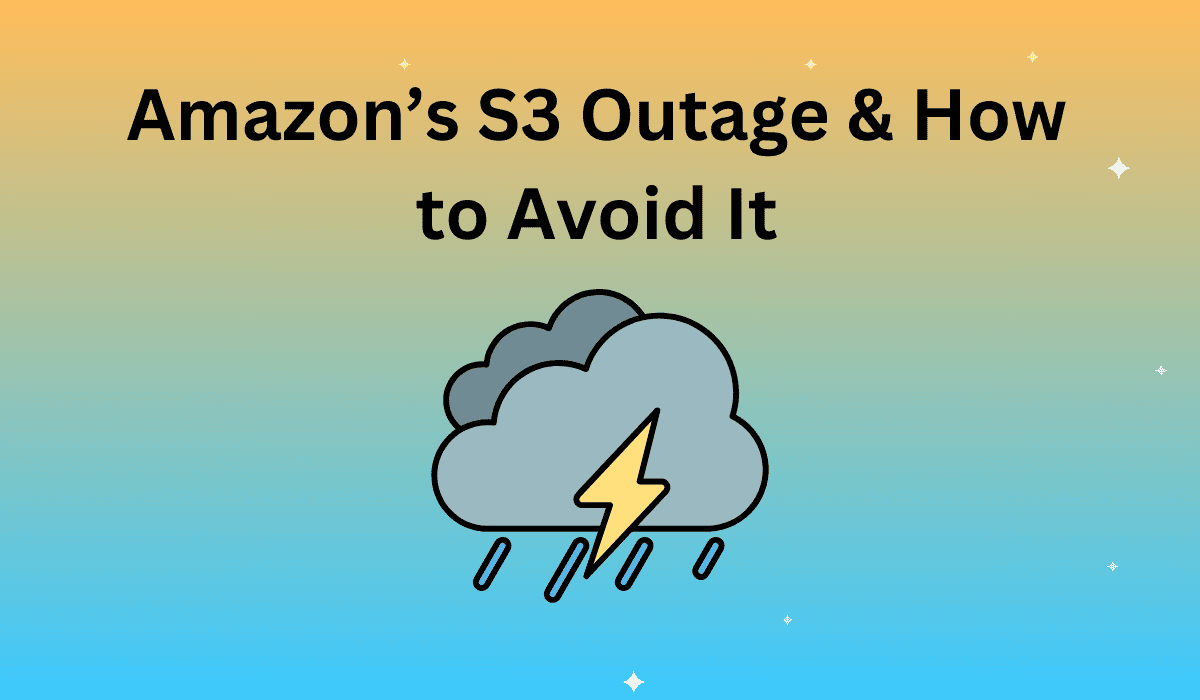Amazon’s S3 in Northern Virginia caused large-scale disruption for many companies – not to mention the financial consequences of dreaded downtime.
There are several important lessons businesses should take from this unprecedented failure, the key takeaway being that preparation is paramount. If Amazon’s cloud can go down, then any site is at risk of suffering the same fate without proper planning in place.
Here are three things to remember:
1. Downtime will (seriously) cost you
Slow website performance costs e-commerce businesses money. Pages that take more than ten seconds to load are waving goodbye to a third of all potential consumers, and during the worst of the outage, some retailers’ sites were taking thirty seconds to load fully. That’s three times the limit of our patience.
In November last year, we put together the ‘Top 100 Web Performance Cyber Monday Index’. From this list, we looked at some companies hit by the Amazon S3 outage. Results included:
- Nike – 12.3 seconds slower to load (642% increase).
- Target – 41.6 seconds slower to load (991% increase).
- Disney Store – 94 seconds slower to load (a massive 1165% increase).
2. You need a backup plan
At the time of the Amazon S3 outage, some websites fared better than others. Typically, those that used multiple databases in the cloud suffered only partial outages, whereas those whose only third-party provider was Amazon had more significant failures.
The benefits of deploying a multi-cloud strategy are clear for businesses. By removing reliance on a single cloud vendor, companies will be better equipped to mitigate issues when one or more of their providers suffers an outage. This sort of backup plan is crucial for anyone with a dependence on cloud software.
The cloud can also be used to backup data, a task that isn’t as challenging as many believe. Additionally, a cloud-based disaster recovery system isn’t an alien concept, but rather based along the same lines as traditional modeling. Furthermore, storing data across local servers in addition to the cloud provides another layer of protection for businesses, and helps them avoid putting all their eggs in one basket.
3. Preparation is paramount
For any business with an online presence, it’s critical not just to be able to respond to crises if and when they happen, but also to have a proactive monitoring system to keep them up to date on potential issues.
There is a range of monitoring tools that can be used to catch outages before they happen. If an element of a website is failing, from third-party services to payment processes, these synthetic helpers can pinpoint the issue and trigger alerts for teams monitoring site performance from anywhere in the world. By using such tools, companies give themselves an advantage when it comes to analyzing the causes of an outage and setting in place recovery processes.
The failure of a large provider such as Amazon should stand as a stark warning to smaller businesses. It can happen to you, and preparation is key for when it does. Website failure and performance degradation can be reduced through regular, scheduled testing of the site and its applications. When even minor outages can have massive financial implications, having a functional contingency plan in place will undoubtedly save companies in the long run.











